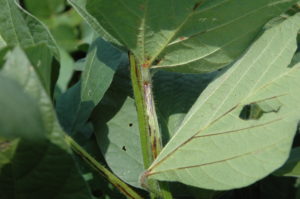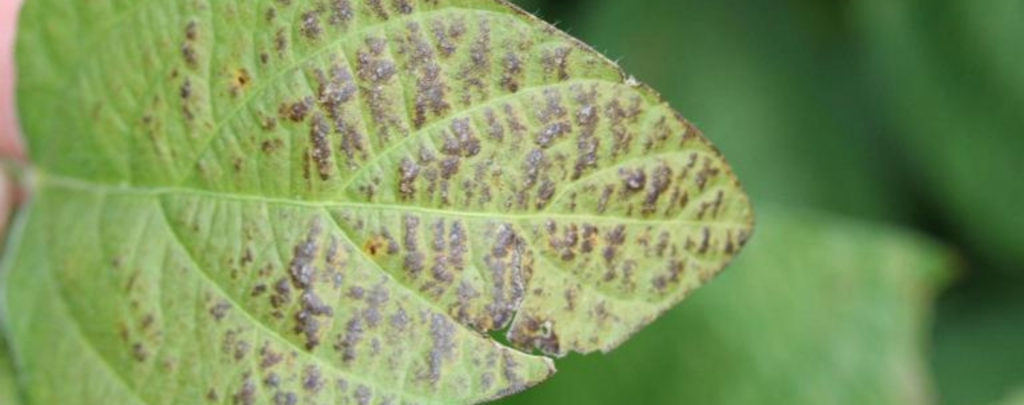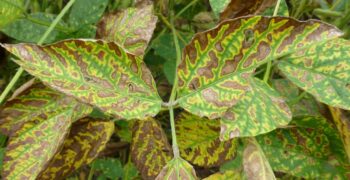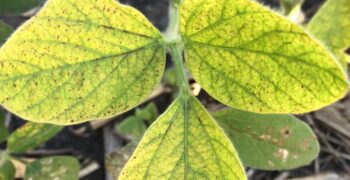Background:
The fungus Cercospora kikuchii is responsible for both cercospora leaf blight (CLB) and purple seed stain (PSS). This disease can be found in both the northern and southern United States. Symptoms can appear early in the development stages but in most cases symptoms show up on the petioles and leaves around seed set R3-R6. The fungus survives on infected residue and seed.
 Scouting:
Scouting:
First scout fields with a history of CLB or PSS, those with history will be most prone to infection. R3-R6 are prime growth stages that CLB and PSS will start to show symptoms.Wet and warm weather is the best condition for this disease to thrive. The petioles will be a brick red colored lesion in the upper canopy, on the leaves exposed to sunlight, light purple discolored patches will be present. As the disease progresses, infected leaves will have a leathery texture to them, and turn a bronze to dark purple in color. If severe enough, leaves can fall off. CLB will not be in concentrated sections of the field but rather spread throughout the field. PSS will cause the seed to turn a pink to dark purple and can cover part or the entire seed, in some cases seed can be infected without illustrating color change.
Management:
- Tillage can help bury residue and reduce the impact CLB and PSS will have on the crop the following year.
- Rotating to a non host crop such as corn, small grains or alfalfa.
- Spraying a fungicide has shown control, avoid Qol (strobilurins) as they have no effect against CLB and PSS.
- Applications should be made R4-R6 for best control.



